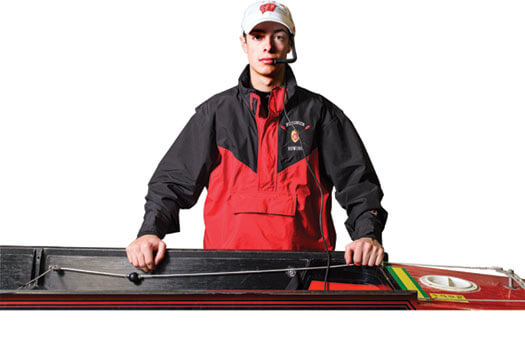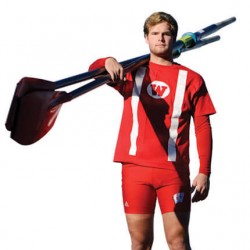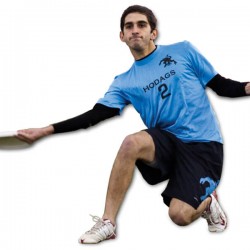Team Player: Leonard Manning
“The key to a good coxswain is realizing that you can’t make the boat go faster. You just make it go as fast as it should.”
Growing up in the Long Island town of Point Lookout, New York, Leonard Manning x’14 always felt comfortable being surrounded by water. So when his older brother convinced him to try out for his high school rowing team as a coxswain, Manning was hooked. In his junior year, he earned Most Valuable Player honors, and he coxswained the boat that won the New York State Rowing Championship in 2010.
Then following in the footsteps of two others from his high school, Manning chose to attend UW-Madison, where rowing is the oldest sport on campus — originating in 1874 — and boasts nine national championships.
Manning is part of the UW’s varsity eight crew (regarded as the most prestigious and fastest boat), but as a coxswain, he never grabs an oar. Instead, it’s his job to push his teammates’ bodies to their limits and navigate the boat.
“The key to a good coxswain is realizing that you can’t make the boat go faster,” he says. “You just make it go as fast as it should.”
To do that, he needs his team to trust that he’s putting them in the best position to win. “Some coxswains try to motivate a boat,” Manning says. “I try to motivate each guy individually.” He does that in part by having conversations with the crew throughout a race. And even though the sport of rowing should appear graceful to the average spectator along the shore, it’s a different story inside the boat.
“It’s pretty hectic,” he says. “Guys are going crazy.”
What may be crazier is that UW-Madison has sent at least one men’s rower to thirteen consecutive Olympic games. While Manning would entertain thoughts of adding to that list in the 2016 Olympics in Rio de Janeiro, he has a more immediate goal in sight. “I want to win the national championship for the UW my senior year. We’ve got some big bodies, so we should be able to compete with anyone we hit the water with.”
Published in the Spring 2014 issue




Comments
No comments posted yet.